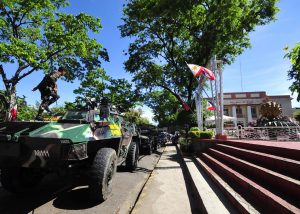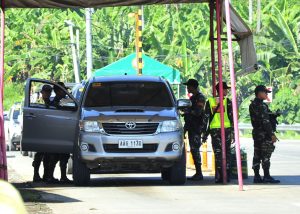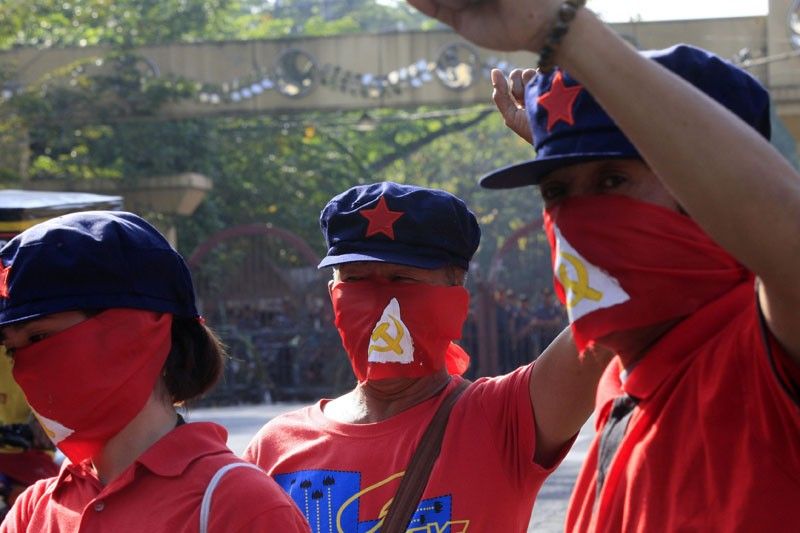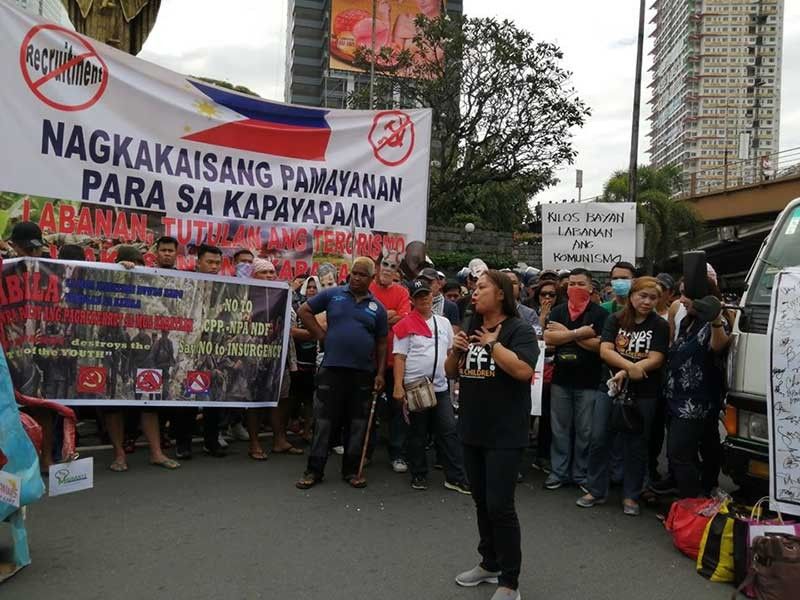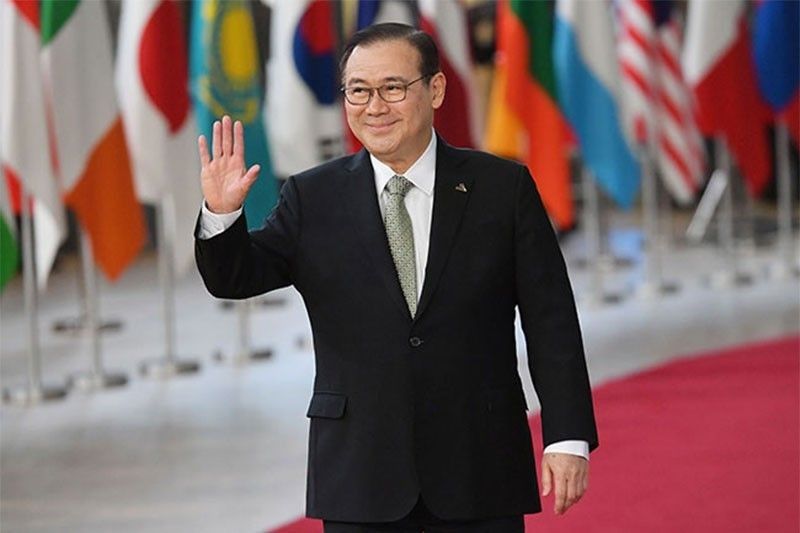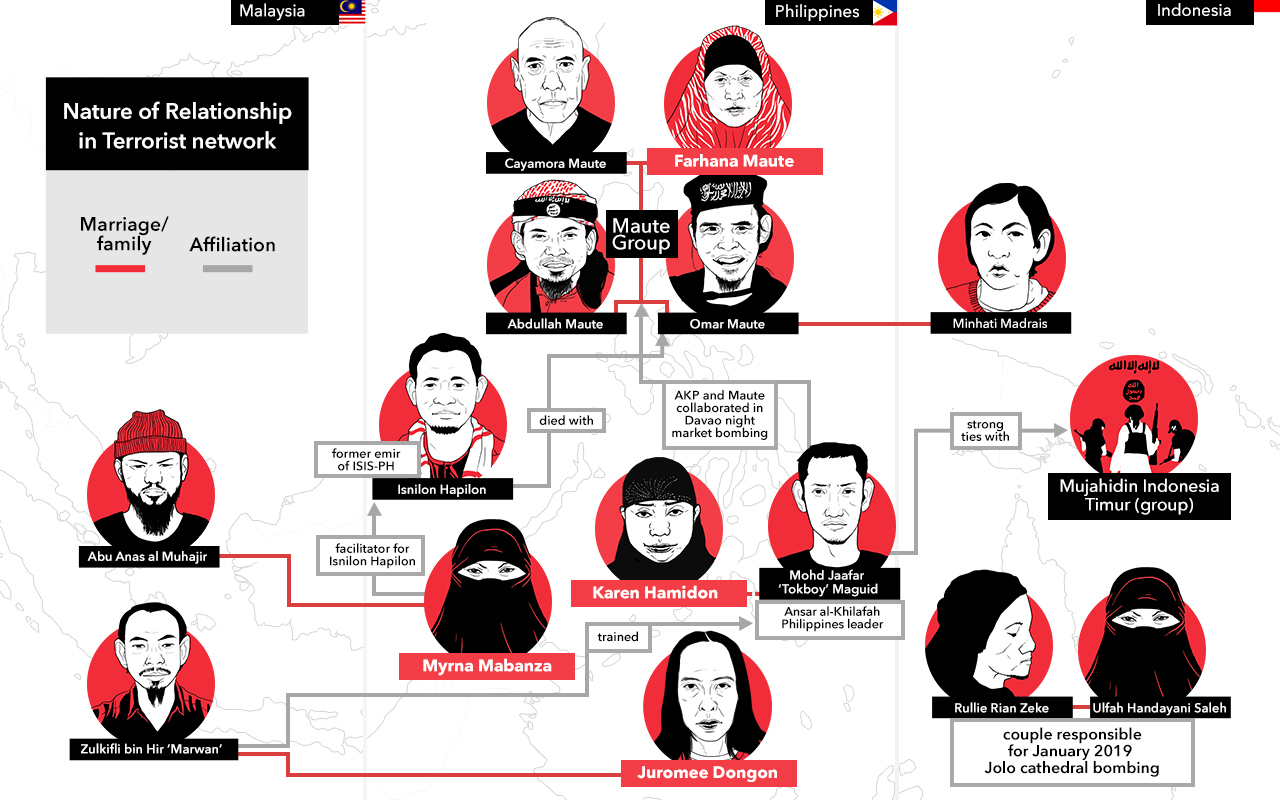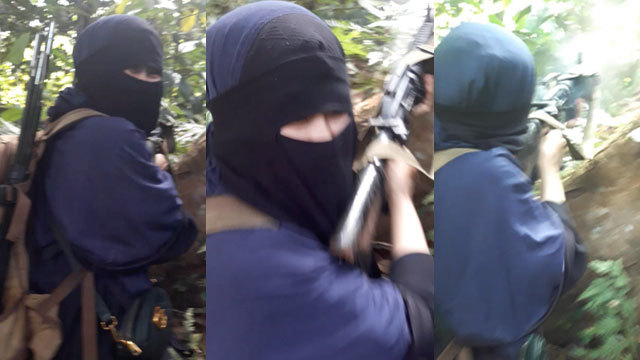
Negros Oriental Gov. Roel Degamo (File photo)
DUMAGUETE CITY -- Negros Oriental Gov. Roel Degamo has underscored the need for all the people in the province to unite as he vowed to put premium on development and not “bullets” as a means to attain lasting peace.
Negros Oriental, being the only province among four in Central Visayas that continues to face the problem of insurgency, has been receiving interventions from the national government to end local communist armed conflict.
The peace and order situation in the province this year was rocked by a series of shooting incidents in July, including the brutal slaying of four policemen allegedly by suspected communist rebels, that sparked public outrage.
Most of the shooting incidents were either insurgency-related or linked to the illegal drug trade, according to police authorities.
Degamo, in his yearend report on his administration’s gains for 2019, assured that despite the unfortunate events that marred the otherwise relatively peaceful atmosphere in the province, development projects especially under his focal program “HELP” will continue without let-up.
HELP stands for Health, Education and Environment, Livelihood Programs and Projects for Peace and Development.
“I have repeatedly said that winning the peace means not just employing the use of bullets, but bringing the government closer to the people by the delivery of basic services and goods,” he said.
These programs and projects, according to the governor, are aimed at helping alleviate the living conditions of his constituents, most especially those living in remote or hinterland villages that are affected by the communist insurgency.
Whether directly or indirectly, people will benefit from these as they are designed to address the more important issues and concerns facing them, the governor said.
Health is wealth
Degamo believes that “a healthy population means a wealthy community.”
One of the provincial government’s remarkable achievements this year is having brought down the malnutrition rate from 5.6 percent in 2018 to 5.2 percent in 2019, he said.
This year, the province also reported that 2,619 individuals had benefited from the Blood Program, which is free for indigents while the New Eye Care Center also served 1,500 patients more or less for free screening and cataract surgeries.
The No Balance Billing Policy adopted by the Negros Oriental Provincial Hospital (NOPH) has benefited some 40,000 patients within the year.
The provincial government has enrolled in the Provincial Leadership Governance Program of the Department of Health (DOH) in preparation for the eventual implementation of the Universal Health Care Program.
The Zero Open Defecation program initially piloted three municipalities successfully increased the percentage access to sanitary toilet from the previous 73 percent to 82 percent this year.
Last Dec. 6, the DOH declared Negros Oriental as one of the 10 malaria-free provinces in the country based on standards of the World Health Organization.
Degamo also reported that various infrastructure projects at the provincial hospital and the district hospitals are ongoing, while projects funded by the Health Facilities Enhancement Program continue to improve the hospital efficiency at NOPH, and the district hospitals in Bayawan City, Siaton, and Guihulngan City.
Addressing the gap in education system
The provincial government continues to allocate funds for education programs to assist the Department of Education in providing better access to quality education to the constituents.
The Special Education Fund (SEF) of PHP36 million for 2019 was appropriated to research, infrastructure, textbooks, personnel hiring, and sports development.
Through the SEF, some 250 teacher aides were employed in the different schools in the province with an estimated annual payout of PHP6 million.
For school year 2019-2020, a total of 39 provincial scholars were reported to have gone to medical school. After graduation and passing the board, these new doctors will serve the province for a few years as part of the contract and will boost the number of doctors already working especially in the far-flung district hospitals.
Under a specialization program to further increase health services in the province, government medical doctors in Negros Oriental are now taking post-graduate courses at hospitals in Cebu City.
In three years’ time, these doctors with specialized disciplines will be employed at the provincial hospital to cope with the demands of the DOH, Degamo said.
Environment takes center stage
Amid the challenges brought about by the global climate crisis, the provincial government embarked on a variety of projects to ensure the sustainability and protection of the environment.
As a commitment to the Paris Agreement, Degamo issued Executive Order No. 9, series of 2018, mandating the use of clean and renewable energy in the 19 municipalities and six cities in Negros Oriental and imposed a moratorium on coal.
Also, following the issuance of Executive Order No. 22-18 in December 2018 declaring every 5th of March each year as Renewable Energy (RE) Day, the governor led this year’s first-ever celebration of RE Day.
As an offshoot, Negros Oriental is the first sub-national government member from the Philippines of the Powering Past Coal Alliance, an initiative of the Royal Embassy of the United Kingdom and the Embassy of Canada.
The Powering Past Coal Alliance is a coalition of national and sub-national governments, businesses and organizations working to advance the transition from unabated coal power generation to clean energy.
In collaboration with the Department of Environment and Natural Resources and the province’s Environment and Natural Resources Division, some of the gains worthy to note include the locally-established 51 Marine Protected Areas, mangrove rehabilitation and management with 3,000 seedlings of “bungarol” and 33,500 propagules of “bakhaw” species distributed and planted in different mangrove sites in the province.
Also, under the Adopt-A-Forest program, farmers’ associations are maintaining 10 hectares of forestlands while the Adopt-A-River program has been implemented at feasible sites in Canlaon City, Sta. Catalina, Siaton, and Mabinay.
Twenty-four farmers’ associations with 1,600 members were organized under the Integrated Social Forestry (ISF) program areas in Bayawan City, Sta. Catalina, Siaton, Amlan, Ayungon, Vallehermoso, and Canlaon City to protect the micro-watershed in these areas.
Livelihood for all
With the aim to give the people a better quality of life through dignified and reliable jobs, the province has undertaken various endeavors to achieve this goal.
Two local and overseas job fairs were conducted this year, with 56 individuals hired on the spot out of 1,387 applicants.
Training on rag-making was also conducted, as well as the Job Coaching Program for proper skills and job matching. Other trainings conducted include fish processing, fruit and vegetable carvings, cake baking, meat processing, poultry and meat processing, among others.
The Provincial Integrated Skills Training Center through the Technical Vocational Education and Training program of the Technical Education and Skills Development Authority (TESDA) has also conducted seven modular trainings, which produced 104 trainees with 12 female finishers.
Projects for peace, development
Degamo reported that gains from agriculture were “very strong” in 2019, even though the farming and fisheries sector had the highest poverty incidence in the province.
He said, however, that the provincial government has come up with interventions, support, and innovations to uplift the lives of this particular sector.
Funded interventions for agriculture amounted to PHP58 million from the national government, he added.
This year, the average rice and corn production on organic agriculture has increased to 2.61 metric tons (MT) per hectare (ha) and 1.25 MT/ha, respectively, versus that of last year’s data of only 1.3 MT/ha and 0.6 MT/ha in 2018.
This is more than the average production of 0.83 MT/ha based on the Philippine Statistics Authority data.
On conventional agriculture, the average production of rice increased from 2.95 MT/ha in 2018 to 3.04 MT/ha in 2019, although for corn, it remains at one MT/ha but is still higher than the PSA estimate.
This is encouraging, considering that many farmers in the province were affected by the Rice Tariffication law, but stop-gap measures were adopted to ensure that the farmers would not be displaced with the importation of commercial rice.
Other projects that would sustain food security include inland fishery projects, catfish production, and livestock sufficiency.
Despite the outbreak of the African swine fever in Luzon, Negros Oriental remained free of the virus that affects pigs with the vigilance and constant monitoring of inbound raw pork meat and processed meat products.
The Provincial Veterinary Office in coordination with the Bureau of Animal Industry had, in fact, confiscated a number of these from passengers arriving here from other ports of origin in the past months.
An amended executive order by the governor ensures stringent measures that will prevent the ingress and egress of pork meat and by-products as mandated by law.
Other programs and projects for peace and development include monetary assistance to individuals in crisis situations, amounting to PHP27 million for an estimated 6,000 beneficiaries, as well as financial aid for senior citizens, persons with disabilities and even living centenarians who each received PHP100,000 on their 100th birthday.
Degamo announced that the social pension for every senior citizen will be at PHP6,000 a year, subject to certain regulations.
Six rebel returnees integrated into the community received financial assistance of PHP65,000 from the Department of the Interior and Local Government and PHP3,000 from the provincial government, as well as additional livestock support as livelihood assistance.
For the differently-abled, a total of PHP1.5 million in assistance was handed out to more or less 174 individuals.
Tourism
In the first eight months of 2019, the province of Negros Oriental registered a spike in the number of tourist arrivals.
Records from the Provincial Tourism Office showed that 668,941 local and foreign tourists visited Negros Oriental in that period, which is 13.19 percent higher compared to the 2018 tourist arrivals marked at 590,975.
The tourists mostly came from the following countries: China (11,005); United States (9,896); Korea (6,135); Japan (4,247); Canada (2,543); France (2,216); Germany (1,839); Hong Kong (1,548); Australia (1,428); and the United Kingdom (1,208).
Negros Oriental ranks as the 13th top destination in the Philippines this year, while Dumaguete City, its capital, was recognized as one of the best places to retire in the world.
Crime prevention
Remarkably, despite the spate of shooting incidents in the province, its crime index is lowest in the region, and way below the regional average of 12.83 percent.
The peace and order in the province is generally peaceful and safe for tourists, investors, and businesses to thrive, the governor reassured.
Although Negros Oriental is under terrorist threat level 2 because of its proximity to Mindanao and the upcoming Sinulog Festival in Cebu City in January, the security preparation here is way above the perceived threat, he said.
Ending local communist armed conflict
On Aug. 14, 2019, the Negros Oriental Task Force to End Local Communist Armed Conflict (NOTF-ELCAC) was formally launched in line with President Rodrigo Duterte’s Executive Order 70 in attaining inclusive and sustainable peace via a whole-of-nation approach.
Negros Oriental was the first in the country to create and launch its Task Force ELCAC, chaired by Degamo.
Its objective is to bring together government agencies to end communist insurgency by delivering basic services as well as addressing the needs of the people, particularly in conflict areas.
Priority areas include 16 barangays in six towns and cities, namely: Barangays Bayog and Lumapao in Canlaon City; Trinidad, Binobohan, Sandayao, Tacpao, Imelda, Hinakpan, Humay-humay, and Planas in Guihulngan City; Dobdob in Valencia; San Pedro and Talalak in Sta. Catalina; Tayak in Siaton; Calango and Mayabon in Zamboanguita.
A series of Dagyawan: Talakayan sa Mamamayan and Gobyernong Serbisyo Caravans was held in all of these towns and cities by the NOTF-ELCAC, spearheaded by the DILG and in collaboration with the Office of the Presidential Assistant for the Visayas.
The Dagyawan is a solution-driven consultation with barangay officials and residents to identify their respective problems, concerns, and other issues, and find ways to address these.
The Gobyernong Serbisyo Caravan, meanwhile, brings together the different government agencies to provide various services to hundreds of residents in the communist insurgency-affected areas.
Degamo has lauded the support of the Armed Forces of the Philippines, the Philippine National Police, and all the national agencies for their support and cooperation to make the first round of ELCAC activities in the province a success.
On Nov. 29, the governor handed over the official list of priority projects to DILG-Region 7 regional director Leocadio Trovela who turned this over to DILG Undersecretary for Operations Epimaco Densing III.
Densing, who delivered his keynote address during the “Dagyawan sa Barangay: Handover of Priority Projects” held at the Lamberto Macias Sports and Cultural Center here, promised that the list will be forwarded to the national government agencies concerned.
Asked what would happen next, Degamo noted that even before the Task Force ELCAC was created, his administration had already started development projects, such as infrastructure, in many parts of the province, including those affected by the insurgency.
He promised to make a follow-up with national authorities on how soon the priority projects identified through the Dagyawan series would be implemented.
Continuity, unity in 2020 ‘key’ to peace
As the year comes to a close, the governor expressed thanks to provincial and local officials, government agencies, non-government and civil service organizations, the private sector and the general public for their contributions to making the year 2019 a fruitful one.
As of Nov. 30, 2019, the provincial government has generated a total income amounting to more than PHP2.347 billion and it is expected to reach PHP2.556 billion by the end of the year.
This is a realization rate of 105 percent against the PHP2.272 billion projection for the year, he said.
Degamo stressed that to achieve peace and prosperity for the province, “we need to do away with politics while providing genuine and sincere public service for the good of all.”
He is hopeful that with a sustained campaign against the insurgency, many Communist Party of the Philippines-New People’s Army (CPP-NPA) members and supporters will come forward and surrender and return to mainstream society.
This would be possible if government agencies will make good their promise to deliver the basic necessities and sustain the provision of government services to the people especially in the hinterland barangays, he said.
At the provincial government level, the governor reassured that his administration will continue with its priority plans, programs, and projects to ensure that every Oriental Negrense will have a better future.
https://www.pna.gov.ph/articles/1089678


